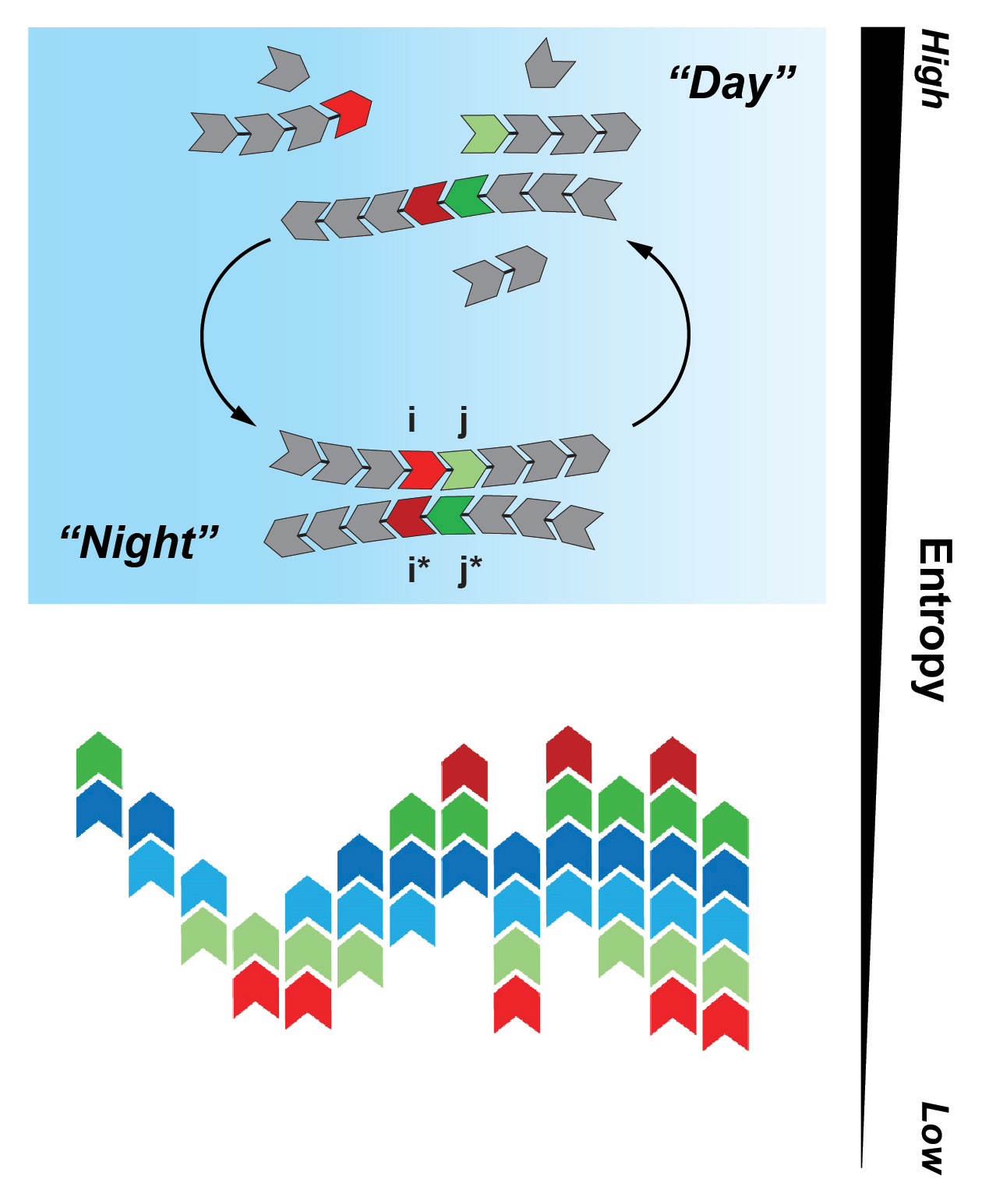Polymer Model Helps Explain the Origins of Life
The way the model reduces information in an increasingly complex system can be applied to make biopolymers and nanostructures.

The Science
Researchers developed a model that describes the process of polymerization. In this process, sets of molecules undergo chemical reactions that string them together into chains or networks of polymers. This model shows how these polymers evolve from a "soup" of different monomers (the sets of molecules) into a complex system. These systems are made from a limited number of polymer segments. That simplicity reduces the entropy, or disorder, in the system. Both numerical results and mathematical analysis show that this process resembles the patterns behind natural selection. Overall, this process drives a major decrease of entropy.
The Impact
The origin of life is one of the greatest mysteries of science. This model helps connect the living and non-living world. On the one hand, this model follows the laws of physics, including the second law of thermodynamics, which states that systems move towards more entropy, not less. On the other hand, when cyclic changes in the environment drive the system away from equilibrium, the system tends to increase its complexity, reducing entropy. This shift occurs as the system selects the “fittest” sequences of polymer chains. This process resembles changes described in Darwin’s theory of evolution. Scientists may be able to use this model in artificial nanoscale systems to create “evolving” nanostructures.
Summary
This theoretical study deals with heteropolymers capable of template-assisted ligation based on Watson-Crick-like hybridization. The system is driven out-of-equilibrium by cyclic changes in the environment. The population dynamics of sequential pairs of specific monomers within the heteropolymer population (called “2-mers”) was then modelled. While the possible number of such pairs is Z2 (where Z is the number of monomer types), most of them eventually become extinct, leaving no more than 2Z survivors. This leads to a dramatic reduction of the information entropy in the sequence space. The numerical results are supported by a general mathematical analysis of the competition of growing polymers for constituent monomers. This natural-selection-like process ultimately results in a limited subset of polymer sequences. An inhomogeneity in initial conditions allows for a massively parallel search of the sequence space for biologically functional polymers, such as ribozymes. There are also potential experimental implementations of this model in the contexts of either biopolymers or artificial nanostructures.
Contact
Alexei V. Tkachenko
Center for Functional Nanomaterials, Brookhaven National Laboratory
oleksiyt@bnl.gov (631)344-2130
Funding
Research carried out at the Center for Functional Nanomaterials, which is supported by the U.S. Department of Energy, Office of Science, Office of Basic Energy Sciences.
Publications
A.V. Tkachenko and S. Maslov, “Onset of natural selection in populations of autocatalytic heteropolymers.” Journal of Chemical Physics 149, 134901 (2018). [DOI: 10.1063/1.5048488]
Highlight Categories
Performer: University , DOE Laboratory , SC User Facilities , BES User Facilities , CFN



